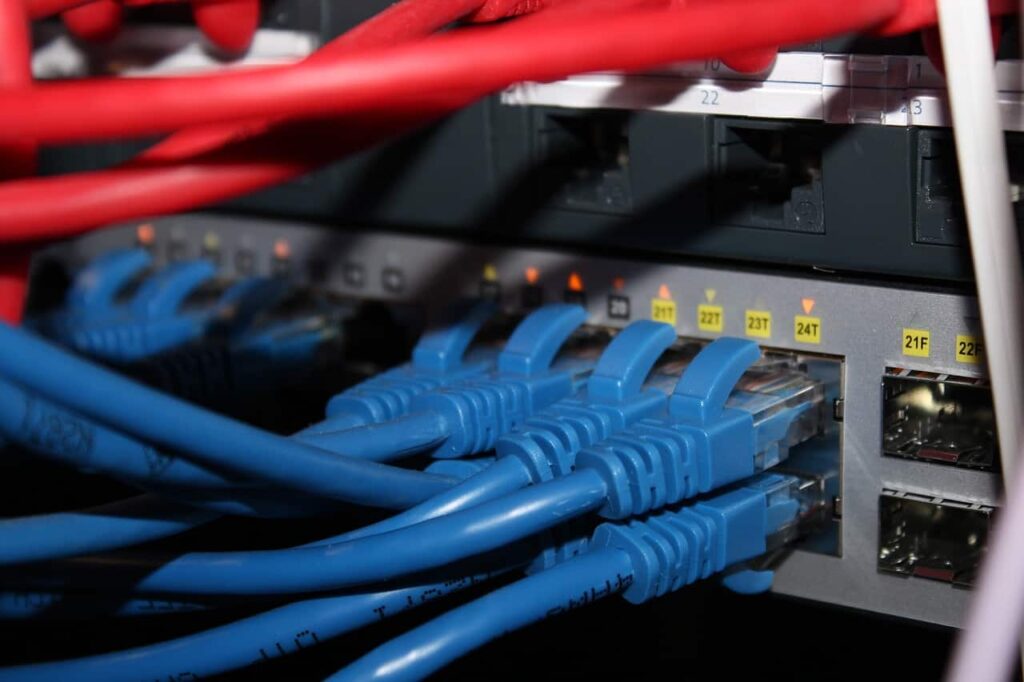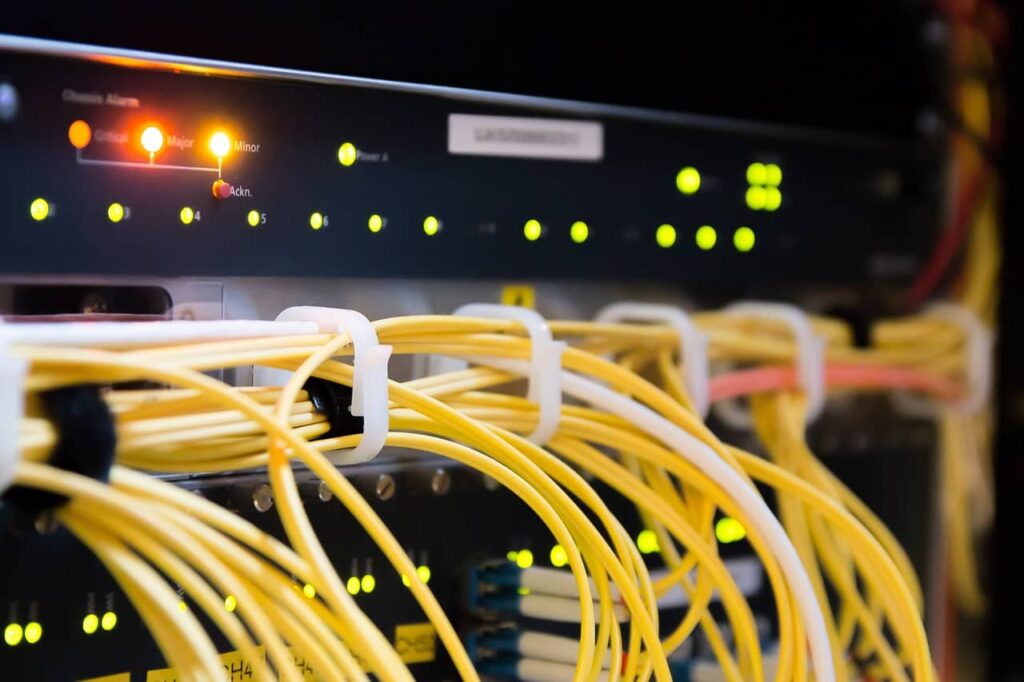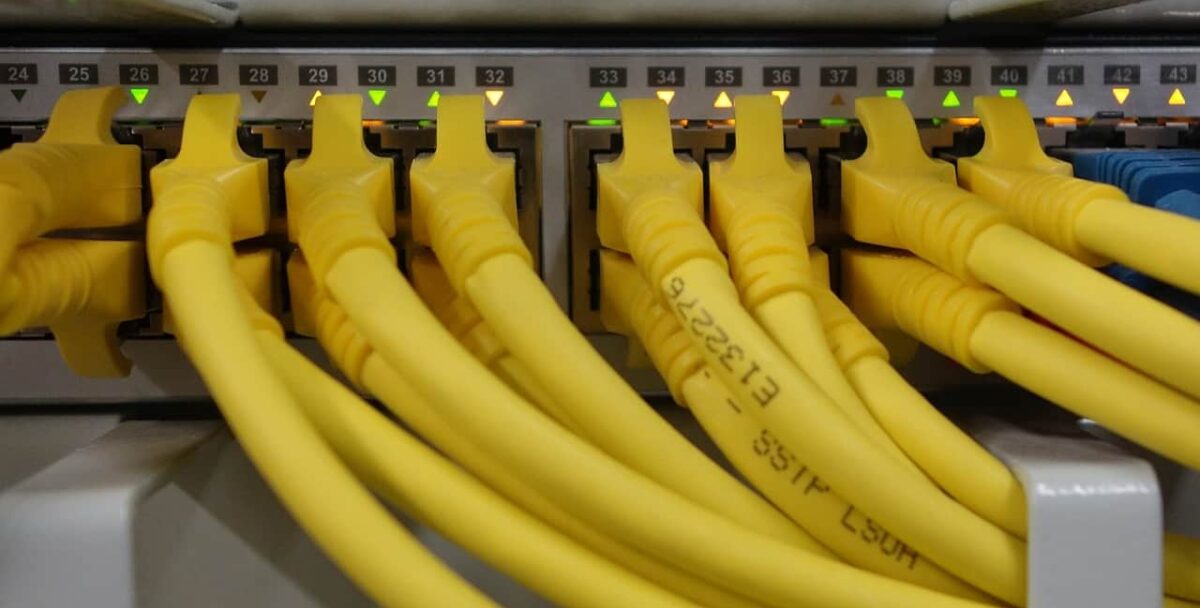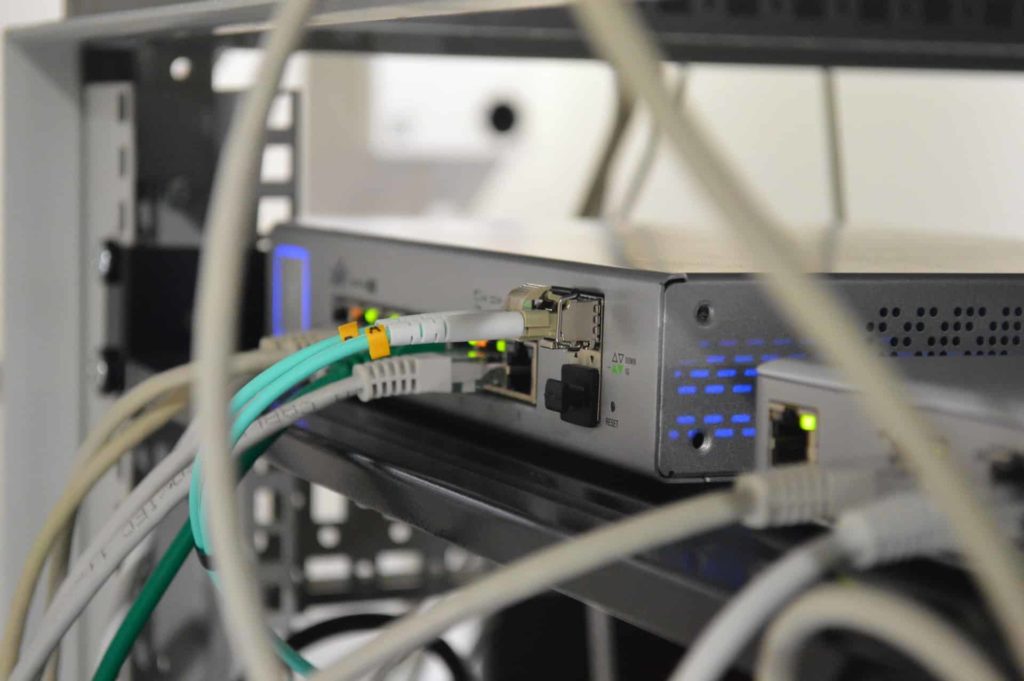Local Area Networks (LAN) have always been designed so that you don’t need more than 100 meters to reach a telecommunications room (TR). This ensures that your business can comply with industry standards and create a safe environment for everyone walking near these cables.
A growing number of businesses today need to install more than 100 feet of LAN cabling to reach the TR, which causes some problems when looking at compliance.
You’re probably familiar with twisted-pair copper cabling because it can be used, according to industry standards, to extend cabling for device connectivity past the 100-meter mark. Once you get past 100 feet, the transmission speeds and power levels are the problems you run into.
With that said, there are good things and bad things about going past 100 meters, and today we will look at some of those to help you determine the best options for you and your business.
Let’s dive in!
Are you seeking workplace technology planning and design for your growing business? Contact C&C Technology to talk to one of our industry experts today!
Related Links: 6 Best Ways To Improve A Building’s Access Codes
Cabling Standards
Without going into detail, be aware that when working in the commercial building space, specific standards (ANSI/TIA-568) must be followed and are based on the performance of system components, channels, and links to make sure everything runs smoothly and works properly.
These standards are designed for ethernet, PoE, HDBase-T, DSL, and other cabling systems. The ANSI/TIA-568 cabling standards have always made it clear that there are 100-foot limits for horizontal twisted-pair copper cabling channels.
These standards include the following system setups below.
Adding a New Telecommunications Room
One way that you can connect devices after the 100-meter mark is to add another telecommunications room. You can build a free-standing cabinet to house the modem or create an entirely new room.
By adding another telecommunication room, you won’t be out of compliance with cabling standards, everything can be more centrally managed, and you can have speed up to 10Gbits/second and deliver 90 watts of Power over Ethernet (PoE).
Using an Extender Device
The next option is to have an Ethernet extender device within your horizontal cable plant. This is cheaper than adding an entirely new room, and the extender device can work off of the existing twisted-pair copper cabling and will also support 10Gbits/sec and as much as 90W of PoE.
The only downside is that extender devices require extra power and add another expense. It will also remove the centralized managing capabilities, making maintenance slightly more challenging.
Connecting Devices Using Fiber-optic Cabling
Another option for extending the distance to devices in the LAN is to connect the device via fiber-optic cabling.
Fiber-optic cabling is always a great option, but it’s so expensive that it doesn’t make much sense, so you can add a few more feet of cabling. In addition, it’s hard to find the right ports with input/output ends, and it ends up taking too much time for most people to try and find the right ones.
Using a Hybrid Copper-fiber Cable
Our last suggested option is a hybrid copper-fiber cable. This will have fiber for the copper conductors for power delivery and data transmission. If you decide to use hybrid-copper fiber cabling, it will also require some expensive transmission equipment and Class 2 limited power source (LPS) so that the power can be delivered properly.
Related Links: 7 Key Tips For Navigating Smart Building Design

More Affordable Approaches
Now that you understand what ANSI/TIA-568 compliance wants you to do, let’s look at the more affordable yet non-compliant way of doing things.
If you need a solution for extending your cabling past 100 feet, all you need to do is use a twisted-pair copper cabling link. You won’t need any extra space, equipment, or points of failure.
If you use twisted-pair copper cabling, you will find that it works well with centrally managing your devices, allows you to troubleshoot tech issues easier, and increases the efficiency of your remote power delivery by using PoE directly through a PoE-enabled switch.
Ready to find the most efficient and affordable technology solution for your growing business? Contact one of our experts today!
Technical Factors
Even though twisted-pair copper cabling is cheaper when extending your cable past 100 feet, remember that it is not supported by ANSI/TIA-568 cabling standards.
Because of this, you will need to look at the cabling standards because they will tell you the minimum performance requirements needed for cabling links, components, and channels so that everything works synergistically between different manufacturers.
Certification testing to cabling standards must be performed at installation time and done on cables that aren’t supporting any applications, transmitting data, or connected devices.
Variability Can Cause Risks
If you are thinking about twisted-pair copper cabling, you need to be aware that after 100 meters, every device becomes unique. The switches and ports that are manufactured by equipment manufacturers are designed initially to meet the specifications of cabling systems up to 100 feet.
Yet as you start extending the cable past this length, you will run into irregular transmissions, and you will need to find a way to accommodate that because you are now outside of the ANSI/TIA-568 standards.
This is when it’s a good idea to work with an infrastructure planning and technology design firm that can help you.
Related Links: Working With Fiber Optic Cables: 5 Important Safety Tips

Making The Final Decision
There is still a lot of confusion in the industry about the distances that twisted-pair copper cabling systems can support after the 100-meter length. A lot of it has to do with manufacturers claiming and marketing their product’s ability to support longer-distance cabling structures and still being able to supply fast high-powered applications.
At the end of the day, do your research before choosing the more affordable twisted-pair copper cabling system. If you can, use the ANSI/TIA-568 compliance guidelines to create your network cabling system.
For more information on how C&C Technology can help, go to our website and talk to an expert today!
Last Updated on January 20, 2023 by Josh Mahan




